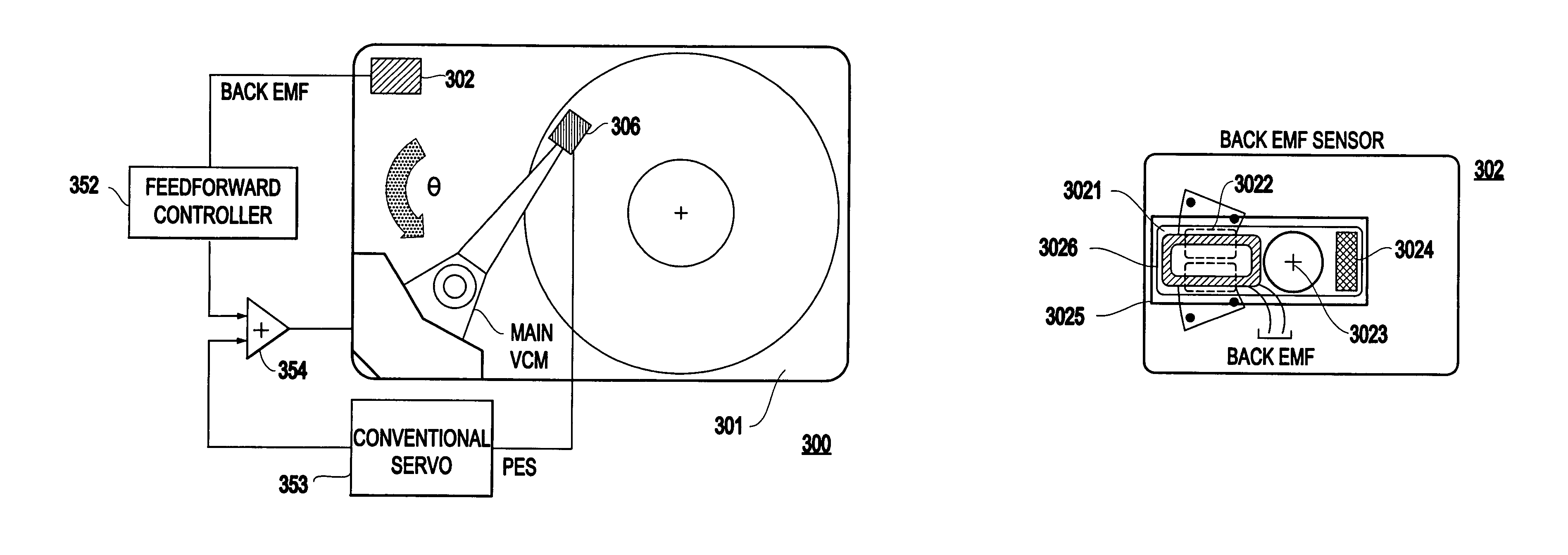Rotational vibration velocity-based sensor for disk drives
a technology of rotational vibration and velocity, applied in the field of disk drives, can solve the problems of prone to vibration, low signal conditioning requirements, and low cost effective sensing of rotational vibration (rv) velocity or acceleration, etc., and achieves less prone to undesirable linear vibration pick up, less stringent signal conditioning requirements, and less prone to vibration
- Summary
- Abstract
- Description
- Claims
- Application Information
AI Technical Summary
Benefits of technology
Problems solved by technology
Method used
Image
Examples
embodiment
Preferred Embodiment
[0063]Turning to FIGS. 3(a) and 3(b), an actuator of a disk drive 300 generates a reaction torque during a seek. In computer configurations where there are multiple drives arranged in the form of an array, the multiple reactions produced by the drives generate a vibration spectrum.
[0064]The form and magnitude of a vibration (e.g., both linear and rotational) spectrum is system-specific, but it tends to be a band-limited power spectrum interspersed with a finite number of harmonics. The base-plate vibration, especially along X, Y and about Z (e.g., coordinate theta) can contribute to TMR.
[0065]As mentioned above, a major contribution to TMR comes from theta-dynamics. The actuator mass imbalance contributes to TMR through the torque disturbance produced by the linear vibration of the actuator pivot, but nominally the imbalance amount is negligible.
[0066]Compliance of the spindle motor bearing can also produce undesirable TMR due to X, Y vibration of its axis of rot...
PUM
| Property | Measurement | Unit |
|---|---|---|
| frequency | aaaaa | aaaaa |
| seek time | aaaaa | aaaaa |
| seek time | aaaaa | aaaaa |
Abstract
Description
Claims
Application Information
 Login to View More
Login to View More - R&D
- Intellectual Property
- Life Sciences
- Materials
- Tech Scout
- Unparalleled Data Quality
- Higher Quality Content
- 60% Fewer Hallucinations
Browse by: Latest US Patents, China's latest patents, Technical Efficacy Thesaurus, Application Domain, Technology Topic, Popular Technical Reports.
© 2025 PatSnap. All rights reserved.Legal|Privacy policy|Modern Slavery Act Transparency Statement|Sitemap|About US| Contact US: help@patsnap.com



